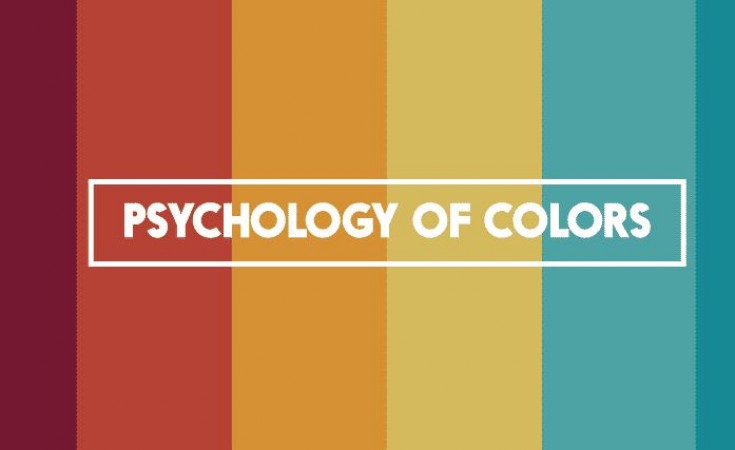
Introduction
Colors play a significant role in our daily lives, affecting our emotions, behaviors, and perceptions. In the world of marketing and branding, understanding color psychology can be a powerful tool to create impactful and memorable experiences for customers. This article explores the influence of color psychology in marketing and branding strategies, uncovering how different colors evoke specific emotions and influence consumer behavior.
Understanding Color Psychology
Color psychology is the study of how colors impact human behavior and emotions. Different colors have the ability to evoke specific feelings and create associations in people's minds. Marketers and brand strategists leverage this understanding to effectively communicate their messages and influence consumer decision-making.
The Role of Colors in Branding
Colors are essential in branding as they help create visual identity and differentiate one brand from another. A carefully chosen color palette can convey a brand's personality, values, and positioning in the market. Consistent use of colors across various touchpoints, such as logos, packaging, and advertisements, helps in building brand recognition and loyalty.
The Impact of Colors on Consumer Behavior
Red: Energetic and Attention-Grabbing
The color red is associated with energy, excitement, and urgency. It grabs attention and stimulates appetite, making it a popular choice for food and beverage brands.
Blue: Trustworthy and Calming
Blue is often linked to trust, reliability, and serenity. It is commonly used by technology and finance companies to instill a sense of security and professionalism.
Yellow: Optimistic and Stimulating
Yellow evokes feelings of optimism, warmth, and creativity. It can create a sense of excitement and is often utilized by brands seeking to convey joy and positivity.
Green: Natural and Soothing
Green represents nature, growth, and harmony. It is commonly used by brands in the health, wellness, and environmental sectors to signify sustainability and well-being.
Purple: Creative and Luxurious
Purple is associated with luxury, creativity, and royalty. It appeals to artistic and imaginative individuals and is often used by beauty and fashion brands.
Orange: Friendly and Energetic
Orange combines the energy of red and the warmth of yellow. It is perceived as friendly and playful, often employed by brands targeting a youthful audience.
Pink: Feminine and Playful
Pink is commonly associated with femininity, tenderness, and playfulness. It is frequently used in branding aimed at women and young girls.
Black: Elegant and Powerful
Black represents sophistication, power, and authority. It adds a touch of elegance and is frequently used in luxury and high-end brand designs.
White: Clean and Pure
White symbolizes purity, cleanliness, and simplicity. It conveys a minimalist and modern aesthetic and is popular in industries such as technology and healthcare.
Gray: Neutral and Professional
Gray is a neutral color associated with professionalism, stability, and balance. It is often used as a complementary color to enhance other hues.
Applying Color Psychology in Marketing Strategies
To effectively utilize color psychology in marketing strategies, consider the following:
Choosing the Right Color Palette
Select colors that align with your brand's personality, values, and target audience. Create a cohesive and harmonious color palette that resonates with your brand identity.
Using Colors to Evoke Emotions
Understand the emotions you want to evoke in your target audience and choose colors that reflect those feelings. For example, if you want to create a sense of urgency, use red.
Creating Brand Identity
Consistently use colors across all brand touchpoints to establish a recognizable and memorable identity. This fosters brand loyalty and makes your brand easily distinguishable.
Designing Effective Call-to-Actions
Use contrasting colors for call-to-action buttons to make them stand out. This encourages users to take action, such as making a purchase or signing up for a newsletter.
Tailoring Colors to Target Audience
Consider the preferences and cultural associations of your target audience. Colors may have different meanings in various cultures, so adapt your color choices accordingly.
Cultural Considerations
Be mindful of cultural differences and avoid colors that may have negative connotations in certain cultures. Research and understand the cultural significance of colors in your target markets.
Case Studies: Successful Branding through Color Psychology
Coca-Cola: The Power of Red
Coca-Cola's iconic red logo and packaging evoke excitement, happiness, and youthful energy. The brand's consistent use of red has contributed to its global recognition and success.
IBM: The Dependability of Blue
IBM utilizes the color blue to convey trust, reliability, and security. Blue has become synonymous with the brand and represents its commitment to providing dependable technology solutions.
McDonald's: The Energy of Yellow and Red
McDonald's combines the vibrant colors of yellow and red to create a lively and energetic brand image. These colors stimulate appetite and create a sense of fun and excitement.
Conclusion
Color psychology is a powerful tool in marketing and branding. By understanding the emotional associations that colors evoke, businesses can strategically leverage colors to influence consumer behavior, establish brand identity, and create memorable experiences. The careful selection and consistent use of colors across various touchpoints can significantly impact how customers perceive and connect with a brand.
Taylor Swift to Repudiate FTX Trading Offer for Brand Diplomat
eFishery Startup to close the Valuation at a whopping figure of %200 Million